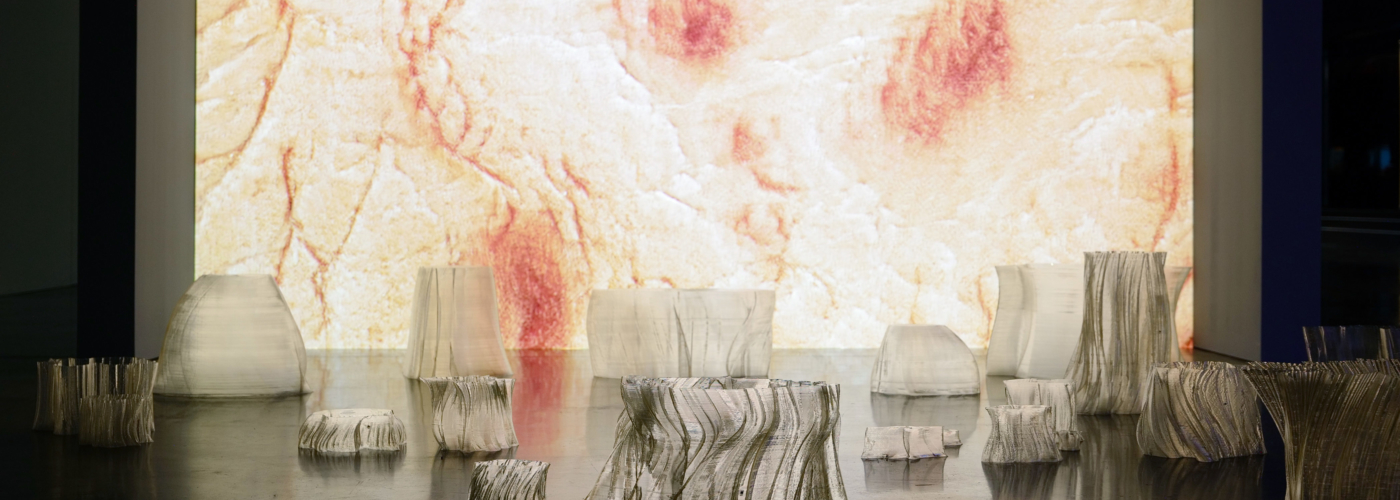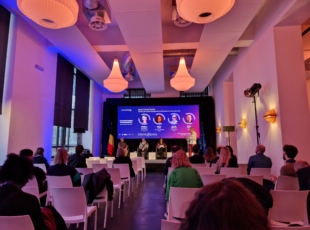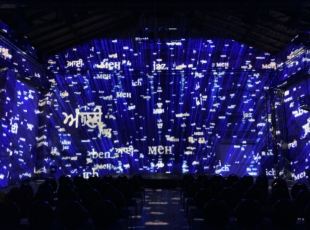Choosing an AI model, the artists’ conundrum (1/2)

Article author :
Proprietary, free and open source software
Media coverage of generative artificial intelligence is today monopolised by the models of Californian companies. Except for the OpenAI products (ChatGPT, Dall-E, Sora, etc.), artists still have restricted visibility of the existing tools on the market. And yet there are dozens of models available – proprietary, free and open source – responding to diametrically opposed artistic or ethical issues. An overview of a number of concerns underlying these tools, backed up by several testimonies.
This article is a republication. The original one was published by HACNUMedia (the media which explores the links between technologies and creation), a kingkong partner.
The choice of an AI model dedicated to creation is often made on artistic (generation of images, videos, sound, texts, etc.) and aesthetic (textures specific to an algorithm) criteria, and is shaped by a certain number of constraints pertaining to a project (the finances available, computer coding skills, etc.). In lieu of offering a comparative of the models available on the market – which would be instantly obsolete – this article looks to understand the impact of certain AI software systems. This first part analyses several effects induced by proprietary, free and open source software programmes. A second part, to be published soon, will analyse the issues depending on the type of dataset.
Several categories of software
The first analysis thus consists of observing the nature of the software used. In fact, software publishers adopt commercial and philosophical strategies which are at times antithetical. The software programmes can be classified according to different categories. First category, the proprietary software systems named ‘commercial’ or ‘closed’ software, whose source code is held and controlled exclusively by one company. The company therefore holds exclusive rights to the software system, which means that the users are not authorised to access the source code, to modify or redistribute it without the express permission of the rights holder. Proprietary software systems may, of course, open their access ‘freely’ (freemium subscription strategy). Second category: the free software systems. They guarantee the users that they can run the programme for a variety of uses, the liberty to study the functioning of the programme and to adapt it to their needs, the liberty to redistribute copies, plus the liberty to improve the programme and to publish these improvements. The commercial use is framed in the form of licences (MIT, Creative Commons, Apache 2.0, GP, etc.). Finally, although quite close to free software systems, open source emphasises accessibility to the source code and community collaboration for the development and dissemination of the software. Nevertheless, an open-source model can be carried by a private company. That is the case of the generative AI Llama or the AI OpenELM, respectively developed by the American giants Meta and Apple. Let us be clear, open source is therefore not necessarily synonymous with philanthropy.
Each publisher defines a strategy which it would be worthwhile specifically scrutinising and analysing their effects in detail. Nevertheless, these three categories of software system – ‘proprietary AI’ (Dall-E, ChatGPT, Midjourney, Adobe Sensei, Prisma. Etc.), ‘free’ or ‘open source AI’ (Hugging Face, Stable Diffusion, WarpFusion, OpenELM, etc.) – allow several issues vital for artists to be distinguished straightway.
The longevity of a work
Obsolescence escapes no AI model and has a direct impact on the longevity of an artwork. In terms of proprietary software systems, the risk for an artist is therefore depending on the modifications a publisher carries out. Michel Seta, a creative technologist at the Montreal-based Lab148, who specialises in AI solutions for artistic projects, bears witness: ‘recently I heard Sandra Rodriguez, who was presenting her installation Chom5ky vs. Chomsky. For this project, the artist had used ChatGPT, which simulated the voice of Noam Chomsky. She had worked for several years on the prompts which triggered certain actions. And then there was an update of the AI model on the part of the publisher. The evolutions of the model rendered the results of the prompts incoherent and non-reproducible over the course of the development iterations. If we place our trust in proprietary solutions in the cloud, we run the risk of having a few surprises, in particular in the event where the artist expresses their wish to build something made-to-measure which will endure over time.’ The publishers regularly update their models and evolve what they may consider flaws, imperfections. The artist Bruno Ribeiro also brings up this expiry date inherent to the models, by making a direct link to his work Polydactylie (a reference to the difficulties AI models have in accurately representing the five fingers and the hands of human beings). ‘The work Rabbit Hole was created in 2023, on a version of Stable Diffusion which has since been updated. If I redid the same prompts but with the recent checkpoints, I would no longer have the same outcome. Well, polydactyly is precisely what I am talking about, it is what enables us to reveal that an image has been generated by an Artificial Intelligence programme. I have kept the earlier versions of this AI but I know that it will be difficult to reuse them. There is a flagrant obsolescence with the AI models on the market.’

In fact, the AI models have their own subjectivity and aesthetic. Justine Emard, an AI specialist, whose artistic corpus explores the relationship between human beings and machines and with other lifeforms, explains the palette’s range. ‘There exist models which will naturally tend towards a 3D effect. Other models, trained on the basis of data including human faces, will turn towards anthropomorphic renderings.’ The artist rightly points to a kind of revival of bygone models capable of generating more fluid deformations. ‘I hear several artists expressing their interest in models dating to 2019-2020. These models perhaps created a pixel mush, but they were interesting precisely for their imperfections, for their grain.’ On this point, therefore, advantage to the open source, which allows permanent access to the source code and ensures a certain artistic longevity and, in the end, a preservation of the artworks produced.
Open source, a seductive philosophy
Marc Chemillier, a study director at the Paris-based EHESS, is the co-creator (along with other IRCAM researchers) of Djazz, an AI which allows music to be improvised on the basis of recorded sounds. It was precisely the open source option which was selected for the development of the software. First of all, because the project is supported by public funding of research and also because the community will ensure the continuity of the project. ‘We are going to publish all of the sources for the project, everything will be accessible on GitHub. Our wish is to see a community form around this patch programmed in Max/MSP (Editor’s note: software used in the domain of digital creation). The obsolescence is too rapid, it has to be taken in hand by the artists themselves. For us “open source” is synonymous with the preservation of the common good.’ This choice pertains first and foremost to a political ideal. ‘The fundamental philosophy of open source comes from research. It draws its origins from the consequences of the Second World War, from the nuclear bomb. After the atomic tragedy, all scientific research was driven by an ideal of sharing,’ adds Marc Chemillier, before making a pertinent comment. ‘But it’s an area marked by tension. The politicians and the industrialists tend to blur this rationale.’ The strategy adopted by Apple however gives pause for thought: to widespread surprise, earlier this spring the brand published, on the Hugging Face library, four versions of an unknown language model, given the name OpenELM. An open source model, part of whose code is also available on GitHub. With this more open approach, Apple hopes to amass users around OpenELM and that they will contribute to its improvement.
In the majority of cases, can open source models genuinely rival the powerful resources of the private sector? It is not unusual, in fact, to see researchers being poached as much by multinationals as by start-ups, or open source models being acquired by private companies. ‘In general, in these transfers of knowledge, the companies only take what interests them and the projects can be disfigured. Yet this capital means that the versions can be improved, upgraded,’ assesses Marc Chemillier. Open source is therefore not necessarily a guarantee of either longevity or ergonomics.
A complex taking in hand
In fact, amongst this large array of models, many artists still lack any point of reference. Sabrina Ratté, a Canadian artist internationally recognised in the domain of contemporary arts, explores the issues of artificial intelligence in her work (Plane of Incidence). She shares her experience of incorporating AI tools in her practice: ‘For me, it is still new and complex. Installing all the AI tools can be tiresome, especially as I have the impression that these open-source tools are not very accessible, not very ergonomic. The proprietary software systems, more widely known to the general public, can at times have better interfaces but do not necessarily meet the needs of an artist. In my mind, it is still abstract.’ To finetune these needs, the artist has in point of fact taken up a residency at the Sporobole, situated at Sherbrooke, in Quebec. This centre will aim to provide the artist with support in finding the most appropriate technical solutions. ‘Technology remains a tool and not an end, but this residency will allow me to better understand the AI models, the issues and to structure my artistic production,’ she adds.
Whilst certain proprietary software system interfaces stand out by means of their ergonomics – and without the shadow of a doubt by their marketing firepower and the means available in terms of communication – the open source models all the same have numerous resources at their disposal. Michal Seta shares a few references: ‘With Lab148, we have begun to explore all these models. We became aware that there exist resources, university research papers, databases, or models which have been made public. The website paperswithcode compiles masses of research. But be aware, 99% of the time you need to have a good grasp of code, especially the Python language.’
Bruno Riberio for his part also confirms the number of resources available online. ‘There are a thousand YouTube tutorials and at least as many artificial intelligence tools coming out every day. It’s a bit like the Far West, but I have the impression that with just a few weeks of working on them, an artist can train themselves in these software systems. I recommend the Pinokioplatform, which enables you to install high-quality and relatively user-friendly open source software. When you do a deep dive, you can obtain results with a quality superior to Midjourney.’ Another reference similar to Pinokio is the Replicate website, a gold mine of models on open source. As regards proprietary software, the availability of online resources is also at the heart of deployment strategies. The social network Discord has been a cornerstone of Midjourney’s deployment strategy, to such an extent that for several months it will have replaced its official site (novice users must still pass via Discord).

The issue of accessibility
The free or open source models have an incomparable advantage over the proprietary models: their gratis nature. And despite economic models which are still finding themselves, certain initiatives are not sidelining the authors. ‘I use WarpFusion based on Stable Diffusion. The user can have access to dozens of extra patches through a subscription system which remunerates its author,’ Bruno Ribeiro points out.
As regards proprietary software, subscriptions to certain models can amount to significant sums for an artist or a studio. By way of an example, you should earmark around $600 annually for a ‘pro’ account at Midjourney (OpenAI pricing founded on a token rationale is in the end quite similar). Add this amount to other proprietary software systems, and the monthly bills will be far from insignificant. But the strategy of proprietary software systems has already been broken in for a long time. Adobe, a template of its kind, has taken steps to ensure that the software becomes the touchstone in the domain of creation, and that it does so from the time of students’ higher education. OpenAI is already communicating with teachers using Teaching with AI and has announced partnerships with certain universities such as Arizona State. This strategy of establishing roots will indisputably become more widespread in the coming months, but is also revelatory of an absence of vision on the part of the ensemble of the actors operating in artistic creation.
That’s why the transmission of information and training in AI models are directions which the artistic creation sector needs to get involved with. Justine Emard tells us that she ‘regularly exchanges views with artists, musicians and composers. Many of them see the emergence of OpenAI as a sudden thing, but few are aware of the developments in scientific research over recent decades. Amongst the enthusiasm triggered by AI, there is a lack of pedagogy. You can go a great deal further by creating your own tools. And then it is not the tool which makes the artist. It is the way you have conceptually implemented it.’ And that is without a doubt one premise which must be included before any AI model decisions are made!
A story, projects or an idea to share?
Suggest your content on kingkong.
also discover

From Belgium to Japan, the new territories of creative digital creativity

Stereopsia, the key European immersive technologies hub

NUMIX LAB 2024: creating bonds and building the future of digital creativity


